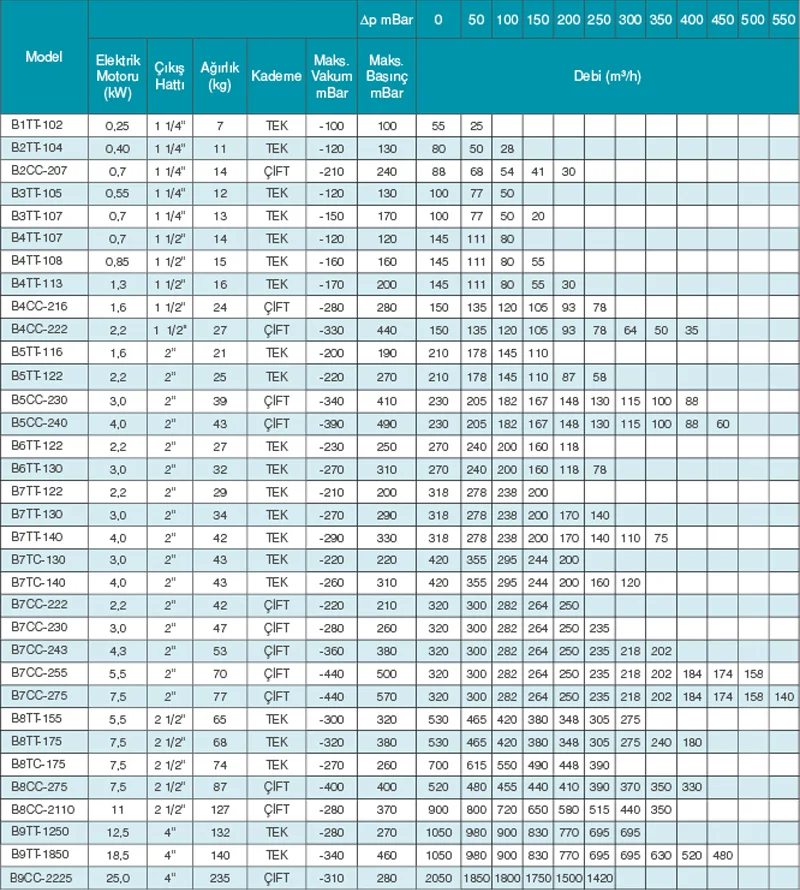Principle of Operation of Blowers
Although blowers exhibit different operations depending on the power of the motor they contain, basically all blowers are equipment installations that provide the transfer of air in the environment exposed to emission at high flow rate or low pressure, and rotate the fan with the force it receives from the motor.

Blowers increase the pressure of the sucked gas as a result of a series of vortex motions created by the centrifugal movement of the impeller. While the impeller rotates, the channels in the impeller push the air forward with a centrifugal motion and a helical motion is created. During this motion, the gas is continuously compressed along the channel and the pressure increases linearly. The pressurized air is transferred to the installation to be used from the blower's outlet channel.
The table below shows the flow rate provided by different blower models according to different motor powers.
